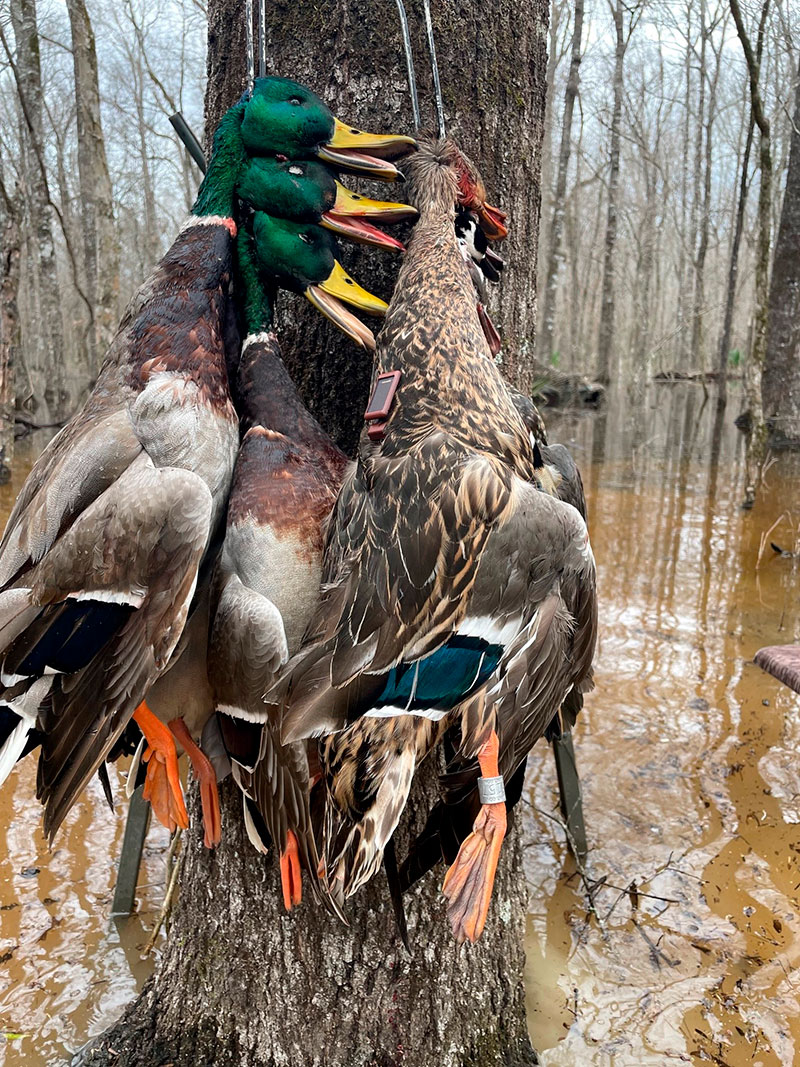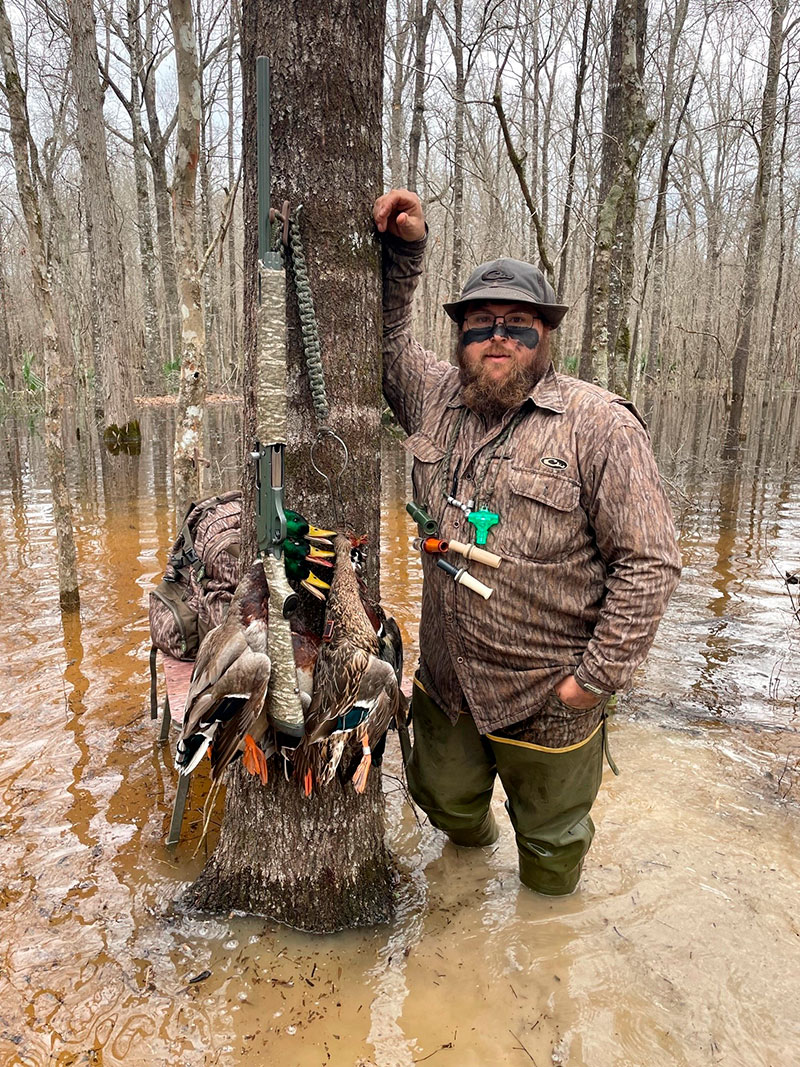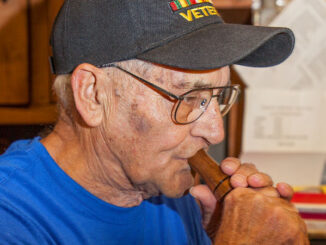On a picturesque clear morning amongst the flooded trees, you and a buddy find a couple of big ducks looking for company shortly after legal shooting hours begin. A few notes on the call and what turns out to be two mallards flutter into the hole just as pretty as they might. Without hesitation, the pair is greeted with gunfire when in range and are easily taken.
What a great start to the morning! You’re on the board with a pretty pair of mallards, with others already starting to circle. You hold off on the retrieve in hopes of getting a few more in the hole while the flight is hot, only leaving your hide to gather the birds in a lull.
Extra hardware
Such was the case for Rudy Deville, of Deville and his hunting partner, Kevin Richardson of Converse on a January morning in Dewey Wills WMA last season. The two were on the last day of a three-day stretch of hunts in the area and were enjoying strong flights of mallards and wood ducks to start the morning. The real excitement came, though, when one of the downed birds was picked up and found to be banded, but that was only the beginning.
“We were so excited in celebrating the band, we didn’t notice the additional cargo the bird was carrying,” Deville said.
Indeed, it wasn’t until the bird was hung on the strap that its backpack comprised of a radio marking unit was revealed. After placing a call to the phone number on the unit, Deville was able to provide the harvest details to LDWF’s Paul Link, LDWF’s Research Program Manager at the Rockefeller Refuge.
As Deville would soon find out, the hen mallard had been banded and fitted with a transmitter not two weeks prior on Lacassine NWR in southwest Louisiana. For Deville, who makes a point to try to avoid taking hens in the name of conservation and colorful straps, the discovery was bittersweet knowing that the bird was part of a conservation data collection effort. Even so, what hunter doesn’t get fired up for a banded bird, much less one sporting a bonus piece of rare hardware?

Deville and Richardson would have undoubtedly had a difficult time picking out a small, brown transmitter unit on the back of a brown bird in the early morning light, thus it’s difficult to blame them for welcoming the decoying birds with gunfire. The vast majority of all fellow waterfowlers would have done the same. However, LDWF’s dedicated staff of waterfowl experts hope most hunters are able to refrain from taking such specially equipped birds if they see birds with transmitters.
Raised awareness
With that in mind, Deville’s experience has helped to raise awareness of these special birds for others to watch out for in their own outings. According to Link, the vast majority of the ducks currently outfitted with tracking units are hens, thus hunters are encouraged to give hens a pass in general in the name of conservation. This practice is of course further valued, and thus critical to strive for when practical, in the event a transmitter-carrying bird is identified prior to taking a shot.
LDWF requests that hunters having either harvested or finding a radio marked bird to please call the phone number shown on the unit immediately. The units are expensive to replace, and may be redeployed to another captured bird to further the research efforts if not damaged beyond repair.
All waterfowlers enjoy a productive morning in the blind, and it’s those same waterfowlers often supporting critical conservation efforts to preserve the resource for the future. This season, consider giving a bit more thought to identifying hens when lighting conditions afford it, and give them a pass in hopes they return the following year with a brood in tow.

